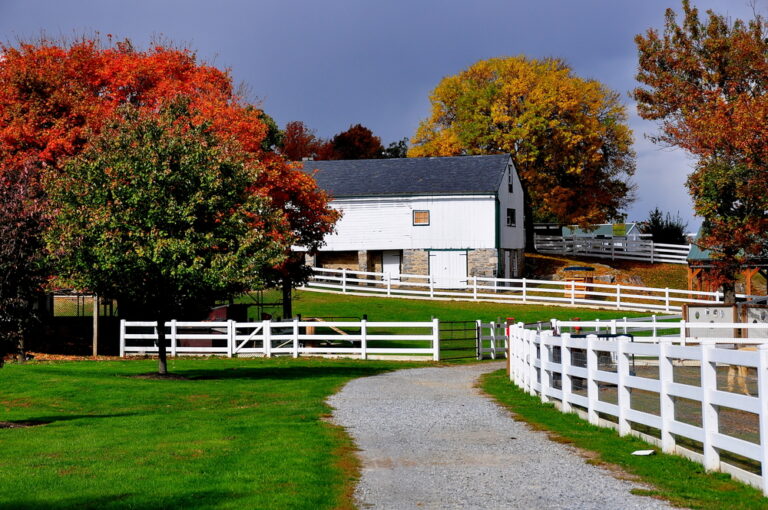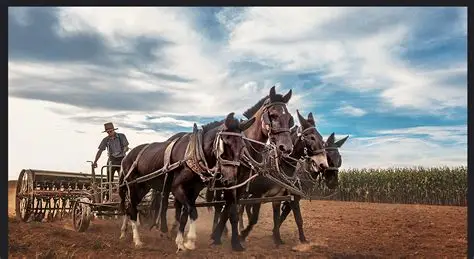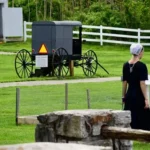The Evolution of Amish Settlements Over Time
Amish settlements have evolved significantly since their origins in Europe, adapting to new environments while maintaining their core values of faith, family, and simplicity. From small villages in Switzerland and Germany to thriving communities across North America, the growth of Amish settlements reflects resilience, adaptability, and a commitment to preserving tradition.
Early European Settlements
The Amish originated in the 17th century within the Anabaptist movement in Switzerland, Alsace, and Germany. Early settlements were small, rural communities focused on subsistence farming and religious observance.
Life was challenging due to persecution by both church and state authorities. Families relied on close community bonds, cooperative labor, and shared values to survive. These early European settlements laid the foundation for Amish social structures, farming practices, and cultural traditions.
Migration to North America
Persecution and limited economic opportunity prompted many Amish families to migrate to North America in the 18th century. Pennsylvania became the primary destination due to William Penn’s promise of religious tolerance and fertile farmland.
Early settlers established small villages with farms, homes, and meetinghouses. These settlements allowed the Amish to maintain their religious practices, language, and customs without interference. Migration marked the beginning of a new phase in Amish settlement evolution, combining old-world traditions with new-world opportunities.
Expansion Within the United States
As populations grew, Amish communities expanded into Ohio, Indiana, and other Midwestern states. New settlements followed patterns established in Pennsylvania, emphasizing agriculture, family cohesion, and community cooperation.
Communities were often clustered near fertile farmland, allowing them to maintain self-sufficiency. The expansion facilitated the growth of schools, churches, and artisan workshops, ensuring cultural continuity and economic sustainability.
Modern Amish Settlements
Today, Amish settlements exist across more than 30 U.S. states, from Michigan and Wisconsin to Kentucky and Missouri. While some communities have grown larger and more organized, they continue to adhere to traditional values.
Modern settlements maintain plain dress, horse-drawn transportation, and cooperative labor. They have also developed small businesses, craft industries, and tourism opportunities that allow them to interact selectively with the broader society while preserving cultural identity.
Settlement Layouts and Community Planning
Amish settlements are designed to support family life, agriculture, and social cohesion. Farms are typically spaced to allow sufficient land for crops and livestock. Houses, barns, and meetinghouses are arranged to foster community interaction while respecting privacy.
Shared resources, such as communal barns or meeting spaces, strengthen social ties. Barn raisings, harvest work bees, and community celebrations reinforce cooperation and ensure the survival of traditions.
Preservation of Cultural Practices
Despite geographic spread and exposure to modern society, Amish settlements preserve key cultural practices. Schools teach practical and religious knowledge, while families continue crafts such as woodworking, quilting, and farming.
Language, rituals, and religious observances remain central, ensuring that each generation retains a strong connection to Amish heritage. Even as settlements evolve in size and location, cultural preservation remains a priority.

Lessons from Amish Settlement Evolution
The evolution of Amish settlements highlights resilience, adaptability, and the power of intentional living. Communities have successfully balanced growth and expansion with cultural preservation, showing that tradition can thrive alongside selective engagement with modern society.
Observers can learn from their approach to community planning, cooperative labor, and the careful transmission of skills and values. Amish settlements provide a model for sustaining identity in changing environments.
Conclusion
Amish settlements have evolved from small European villages to expansive communities across North America. Migration, population growth, and geographic expansion have shaped the physical and cultural landscape of these settlements. Despite changes over time, the Amish maintain core values of faith, family, simplicity, and cooperation. Studying the evolution of Amish settlements offers insight into a culture that adapts without losing its essence, demonstrating resilience, intentionality, and a lasting commitment to tradition.



